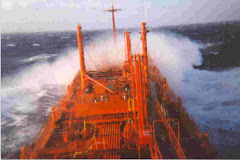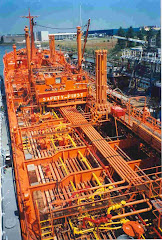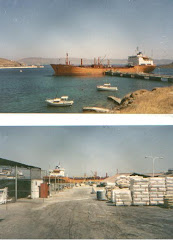Do expectations for DRYS match up with reality? Does the DRYS BoD provide adequate shareholder oversight? Recently there have been several major transactions between DRYS and private companies controlled by the DRYS CEO. In just a few months after entering these transactions, they have resulted in substantial losses for the company.
Despite high expectations and a recent recovery in share price from a low of US$ 3.04 to an early January high in excess of US$ 16 about 10 days ago, DryShips recently issued a press release bracing investors for a net loss of up to US$431.4m in the fourth quarter. The company shares are now trading in the region of US$ 10-11.
Much of this expected loss relates to one-off payments for the cancellation of vessel purchases and disposal of a trio of capesize newbuildings. The decision to axe the purchase of nine capesizes from Economou’s Cardiff Marine could also erode the bottom line.
There is also an unrealized mark-to-market interest rate swap loss of approximately US$177m. Finally there is discussion of a possible write down associated with the Ocean Rig acquisition.
These losses can be classified into two categories: 1.) Risky asset acquisitions from CEO's private company to DRYS and 2.) risky business decisions outside of core business with a major impact on the group as a whole.
Shifting assets between a company that is privately held by the CEO to the publicly listed entity that he manages raises a number of issues. On a positive side, perhaps the CEO is using the private company as a business incubator and the public entity as the financing tool. On the other hand, there are questions about BoD oversight, especially concerning risk management and financial losses so soon thereafter.
The transactions between the public and private entities have been done through stock, debt and cash exchanges. The order cancellations that have led to the losses have been negotiated with cash, stocks and warrants between the respective entities. This makes evaluation difficult and does not assist with transparency.
The offshore diversification into deep water offshore drilling merits some attention. This is an activity that is new and totally outside the purported business of DRYS as a dry bulk cargo transport. It entails huge asset investments in offshore drilling platforms that dwarf the investment in the dry bulk vessels as well as significant increase in debt leveraging of the group. The CEO's private company has been heavily involved in developing this business, too. The results of this operation will have a major impact on the future of the company. Whether this activity can be spun off as a separate listing depends very much on future conditions on Wall Street as well as future expectations for this sector now that oil prices have fallen below US$ 50.
On the market upside DRYS was an outperformer with strategies that outpaced peer companies. So far on the downside, it has been a rough ride.
Despite high expectations and a recent recovery in share price from a low of US$ 3.04 to an early January high in excess of US$ 16 about 10 days ago, DryShips recently issued a press release bracing investors for a net loss of up to US$431.4m in the fourth quarter. The company shares are now trading in the region of US$ 10-11.
Much of this expected loss relates to one-off payments for the cancellation of vessel purchases and disposal of a trio of capesize newbuildings. The decision to axe the purchase of nine capesizes from Economou’s Cardiff Marine could also erode the bottom line.
There is also an unrealized mark-to-market interest rate swap loss of approximately US$177m. Finally there is discussion of a possible write down associated with the Ocean Rig acquisition.
These losses can be classified into two categories: 1.) Risky asset acquisitions from CEO's private company to DRYS and 2.) risky business decisions outside of core business with a major impact on the group as a whole.
Shifting assets between a company that is privately held by the CEO to the publicly listed entity that he manages raises a number of issues. On a positive side, perhaps the CEO is using the private company as a business incubator and the public entity as the financing tool. On the other hand, there are questions about BoD oversight, especially concerning risk management and financial losses so soon thereafter.
The transactions between the public and private entities have been done through stock, debt and cash exchanges. The order cancellations that have led to the losses have been negotiated with cash, stocks and warrants between the respective entities. This makes evaluation difficult and does not assist with transparency.
The offshore diversification into deep water offshore drilling merits some attention. This is an activity that is new and totally outside the purported business of DRYS as a dry bulk cargo transport. It entails huge asset investments in offshore drilling platforms that dwarf the investment in the dry bulk vessels as well as significant increase in debt leveraging of the group. The CEO's private company has been heavily involved in developing this business, too. The results of this operation will have a major impact on the future of the company. Whether this activity can be spun off as a separate listing depends very much on future conditions on Wall Street as well as future expectations for this sector now that oil prices have fallen below US$ 50.
On the market upside DRYS was an outperformer with strategies that outpaced peer companies. So far on the downside, it has been a rough ride.









No comments:
Post a Comment